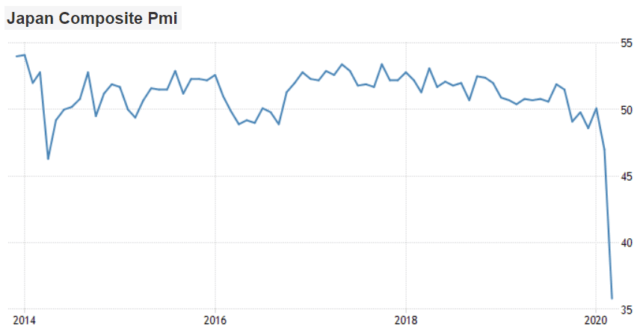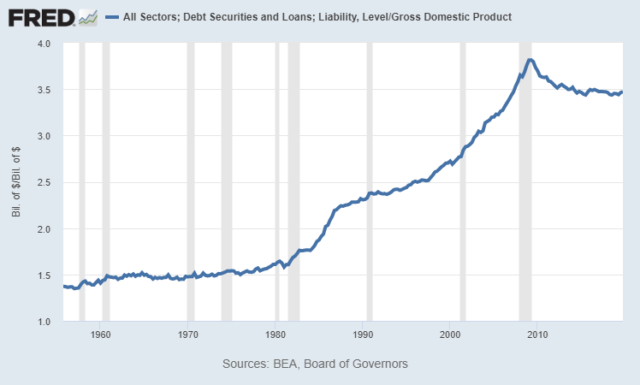Many comparisons are being made between the current predicament that the United States and the rest of the world finds itself in and the Great Depression of the 1930s. This current time will certainly be a period that historians in the future will have a lot to write about, culturally, geopolitically, and economically.
The fastest fall from all-time stock market highs into bear market territory on record, combined with a seven-figure burst of unemployment in one week and an expected Q2 GDP figure that may reach into the negative double digits, certainly seems like a depression. Global PMIs in multiple affected countries have already fallen off a cliff into depression-like levels as well.
For example, here is Japan’s composite PMI:
Chart Source: Trading Economics
And here is the U.S. weekly initial jobless claims number compared to over 50 years of history. It looks like a typo but is not:
Chart Source: St. Louis Fed
Adding onto that, we’re likely in the “popping” phase, or at least the "letting the air out" phase, of the largest global debt bubble as a percentage of GDP in world history, which is a topic that few people are discussing and is part of what made liquidity so horrendous in the markets over the past month. The economic impact of the virus, as bad as it is on its own, also laid bare the leverage that was already there.
Here is the total debt, public and private, as a percentage of GDP in the United States:
Chart Source: St. Louis Fed
The leverage in the 2000s crisis was generally pushed up to the banking and housing sector. When that unwound in 2007/2008, the leverage there was generally pushed up to the sovereign level, as the federal debt/GDP ratio quickly went from 60% to 100% in a handful of years. We’re now
I share model portfolios and exclusive analysis on Stock Waves. Members receive exclusive ideas, technical charts, and commentary from four analysts. The goal is to find opportunities where the fundamentals are solid and the technicals suggest a timing signal. We're looking for the best of both worlds, high-probability investing where fundamentals and technicals align, and we identified a ton of bearish setups in the past couple months leading up to this crash in our "Where Fundamentals Meet Technicals" series.
Start a free trial here.



